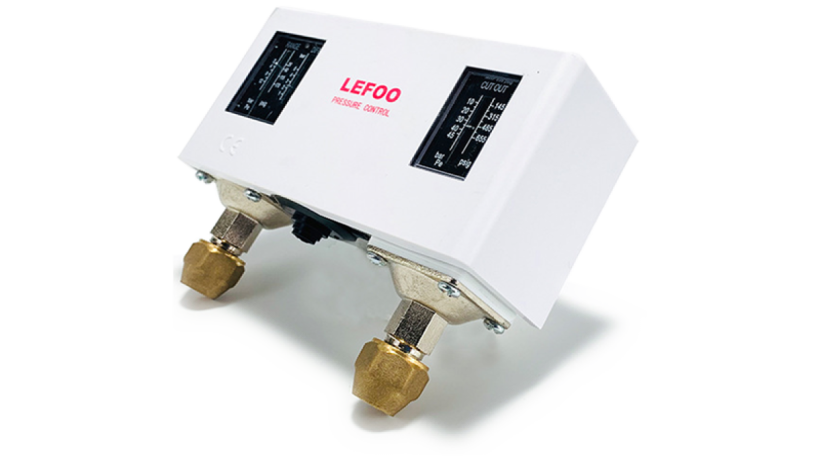In modern HVAC (Heating, Ventilation, and Air Conditioning) systems, pressure switches play a critical role in ensuring efficiency, performance, and safety. These devices monitor pressure levels within the system and trigger necessary actions when predefined thresholds are met. By preventing overpressure conditions, ensuring adequate airflow, and maintaining system balance, pressure switches contribute to the longevity and reliability of HVAC equipment. This article explores the importance of pressure switches in HVAC applications, their types, working principles, benefits, and selection criteria.
Understanding Pressure Switches in HVAC Systems
A pressure switch is an electromechanical device that activates or deactivates a circuit based on pressure variations in an HVAC system. These switches are designed to regulate refrigerant pressure, monitor airflow, and protect compressors from damage due to abnormal pressure conditions. They are essential for ensuring that heating and cooling units operate within safe parameters.
Types of Pressure Switches Used in HVAC
There are several types of pressure switches used in HVAC applications, each serving a specific function:
- High-Pressure Switches: These switches are designed to shut off the compressor when pressure exceeds a safe limit, preventing system damage and refrigerant leaks.
- Low-Pressure Switches: Used to monitor refrigerant pressure, low-pressure switches ensure that the compressor does not operate under conditions that could lead to inefficiencies or mechanical failure.
- Differential Pressure Switches: These are commonly used to monitor airflow in HVAC systems. If airflow becomes restricted due to a clogged filter or duct obstruction, the switch signals the system to take corrective action.
- Adjustable vs. Fixed Pressure Switches: Some HVAC systems use adjustable pressure switches that allow customization of activation points, while others rely on pre-set fixed pressure switches for specific applications.
How Pressure Switches Work
Pressure switches operate based on pressure differentials within an HVAC system. A diaphragm or sensor inside the switch detects changes in pressure and triggers an electrical contact when a threshold is exceeded. This action either activates or deactivates a connected component, such as the compressor or blower fan. The response of the switch helps regulate temperature, maintain pressure balance, and prevent system malfunctions.
Key Benefits of Using Pressure Switches in HVAC Systems
The inclusion of pressure switches in HVAC systems provides several advantages:
- Enhanced Safety: Pressure switches prevent hazardous conditions such as overheating, compressor burnout, and refrigerant overpressure.
- Energy Efficiency: By optimizing system performance and preventing excessive power consumption, pressure switches contribute to energy savings.
- System Protection: These devices protect critical components, reducing the likelihood of costly repairs and downtime.
- Improved Air Quality: Differential pressure switches ensure proper airflow, preventing the circulation of pollutants and maintaining indoor air quality.
- Regulatory Compliance: Many building codes and industry standards require the use of pressure switches to ensure HVAC systems meet safety and performance guidelines.
Selecting the Right Pressure Switch for HVAC Applications
Choosing the right pressure switch involves considering several factors:
- Operating Pressure Range: Ensure the switch is compatible with the system's pressure parameters.
- Switching Sensitivity: Depending on the application, a highly sensitive switch may be necessary for accurate pressure detection.
- Material and Durability: Pressure switches must be made from durable materials to withstand environmental conditions and prolonged use.
- Electrical Ratings: The switch should match the electrical specifications of the HVAC system to ensure compatibility.
- Mounting and Installation: Different HVAC systems require specific mounting configurations, so it's essential to select a switch that fits seamlessly into the system.
Common Applications of Pressure Switches in HVAC Systems
Pressure switches are used in various HVAC applications, including:
- Air Handlers and Blower Systems: Monitoring airflow to prevent inadequate ventilation.
- Refrigeration Units: Ensuring refrigerant pressure remains within operational limits.
- Heat Pumps: Regulating pressure changes for efficient heating and cooling cycles.
- Industrial HVAC Systems: Managing pressure in large-scale commercial heating and cooling units.
- Ductwork and Filtration Systems: Detecting clogged filters and triggering maintenance alerts.
Maintenance and Troubleshooting of HVAC Pressure Switches
To ensure optimal performance, regular maintenance and troubleshooting of pressure switches are necessary:
- Inspect for Dirt and Debris: Clogged sensors can lead to false readings or malfunction.
- Check for Leaks: Pressure drops due to leaks can impact system efficiency.
- Test Electrical Connections: Faulty wiring can cause improper switch operation.
- Calibrate as Needed: Adjustable switches should be periodically checked for correct settings.
- Replace Worn-Out Switches: Over time, pressure switches can degrade and require replacement to maintain system reliability.
Pressure switches are indispensable components in HVAC systems, ensuring safe and efficient operation across various applications. By monitoring pressure levels, preventing equipment failures, and optimizing energy consumption, these devices contribute to the overall reliability of heating, cooling, and ventilation units. Selecting the right pressure switch tailored to specific HVAC needs enhances system performance while reducing maintenance costs and operational risks. Investing in high-quality pressure switches is a smart choice for ensuring long-term efficiency and safety in HVAC systems.



